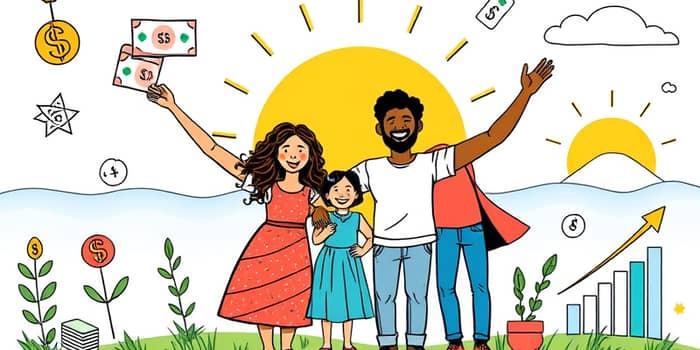
Debt can feel like a heavy burden that dims your hopes and limits your potential. As households across America carry unprecedented balances, the journey to financial freedom might seem daunting. Yet with dedication, planning, and consistent effort, a debt-free future is within reach. This comprehensive guide will inspire you, arm you with practical tools, and help you navigate the path to lasting stability.
In 2025, the average American household carries over $140,000 in total debt, encompassing mortgages, credit cards, car loans, and student loans. While home loans and equity lines have driven modest growth—about 0.93% year-over-year—unsecured consumer debts remain a stress point for countless families.
Seniors aged 70 and older have seen their debt surge by 36.2% over the past five years, making them the fastest-growing borrower group. This shift highlights how debt challenges span generations, from young professionals to retirees.
Reducing debt is now the top financial goal for 42% of Americans, outranking saving for retirement or major purchases. The emotional weight of carrying balances takes its toll: 52% worry about long-term financial well-being, while 48% fear debt’s impact on life plans and dreams.
Becoming debt-free offers more than relief from monthly payments—it unlocks greater financial and emotional freedom, empowers you to pursue new opportunities, and provides resilience against unexpected emergencies.
Nearly 90% of Americans expect challenges in meeting their financial resolutions. The most frequent barriers include:
Identifying these hurdles is the first step toward conquering them. Armed with clear strategies and sustainable habits, you can transform obstacles into stepping stones.
Choosing the right repayment method is critical to minimize interest costs and maintain motivation. Below are four powerful approaches:
The Debt Avalanche Method focuses on paying debts from highest to lowest interest rate. You make minimum payments on all obligations, then direct any extra funds to the debt with the steepest rate. Once it’s eliminated, you move on to the next highest.
This approach can take 18–24 months to clear your top-rate balance, but it saves the most on interest in the long run. Patience and discipline are key to reaping maximum savings.
With the Debt Snowball Method, you list debts from smallest to largest balance, regardless of rate. After making minimum payments on each, you funnel extra dollars to the smallest debt first, celebrating each payoff as a victory.
These psychological “quick wins that fuel motivation” build momentum and sustain your commitment over time. While interest savings may be slightly lower than the avalanche, the confidence boosts can be invaluable.
Debt consolidation combines high-interest debts into a single loan with a lower overall rate. Options include personal consolidation loans or balance-transfer credit cards. Carefully compare fees and terms to ensure genuine savings.
Another tool is using a Home Equity Line of Credit (HELOC) to refinance pricey obligations. Remember that this converts unsecured balances into secured debt, tying your home to repayment risk. Proceed with caution and a clear exit plan.
A solid budget is the backbone of debt elimination. Start by tracking every source of income—salaries, side gigs, and other inflows. Then list expenses:
Popular frameworks include:
Leverage budgeting apps or spreadsheets to monitor progress. Automate transfers to savings or debt accounts on payday, and review and adjust your plan monthly as life evolves.
Financial literacy underpins every decision. Educate yourself on key concepts like interest rates, investment basics, and credit scoring. Set specific, measurable goals, then break them into actionable milestones.
An emergency fund for unexpected costs—ideally three to six months of expenses—serves as a shock absorber, preventing new debt from surprise events. Regularly monitor your credit report and understand the cost of borrowing before you apply for new credit.
A debt-free journey demands more than tactics—it requires belief in your ability to succeed. Establish an intentional plan with clear deadlines, and celebrate every small victory along the way to stay motivated.
When challenges arise, consider consulting a certified financial planner. Their expertise and accountability can accelerate your progress and keep you focused on long-term goals.
Once you’ve cleared debts, adopt disciplined spending habits to maintain freedom. Continue building savings, review your budget regularly, and invest in ongoing financial education to prevent slipping back into harmful patterns.
Building a debt-free future is a transformative journey of self-discovery, resilience, and triumph. By understanding your current situation, choosing proven repayment strategies, and cultivating healthy financial habits, you’ll unlock the freedom to pursue dreams, weather life’s storms, and secure a legacy of stability. Start today—your future self will thank you for the empowerment gained through intentional planning and unwavering commitment.
References













